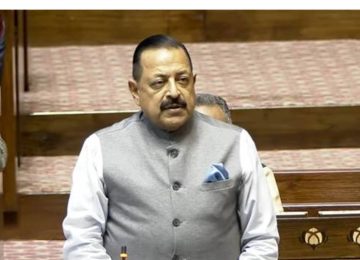By 2028, the lithium-ion battery market is anticipated to grow at a compound annual growth rate (CAGR) of about 20.09%, to reach Rs 1.77 trillion
The increased need for Lithium-ion batteries in India can be ascribed to their extensive application in several industrial sectors, including uninterruptible power supply (UPS) systems, healthcare, and telecommunications.
India’s increasing need for clean energy is expected to fuel the country’s rapid increase in the adoption of electric vehicles (EVs). The government wants to electrify two-wheelers, three-wheelers, and commercial vehicles to meet its target of 30% adoption of electric vehicles by 2030. The Li-Rack battery, which was introduced in India, marks a substantial development in battery technology, according to a new ResearchAndMarkets study.
Drivers:
Because lithium batteries can be charged on demand, forklifts can run for several shifts without needing to replace their batteries, which lowers the cost of labor and equipment. Future developments in lithium-ion technology, which are typified by longer runtimes and quicker charging times, should further reduce running costs, enabling firms to see larger and faster returns on their investments.
Electric bikes are becoming more and more popular as a result of their noiseless and emission-free design, which helps meet the growing demand for environmentally friendly transportation. India is actively addressing the growing demand for lithium-ion batteries in the nation despite relying on imports for more than 70% of its needs. Examples of these efforts include the establishment of a giga-factory in Hyderabad and participation in government incentives.
Challenges:
As of July 1, 2022, only 50 of the 2,877 authorized charging stations had been installed, indicating that despite government efforts, the actual implementation of the plan to expand India’s infrastructure for charging electric vehicles has been limited. The problem is made worse in semi-urban and rural areas due to inadequate power generation capacity, which restricts the development of electric two-wheelers and creates a major barrier to their widespread use.
India needs to focus on developing lithium-ion battery technology for electric vehicles because it lacks domestic lithium production and control over the commodity. By 2030, the country’s need for Li-ion battery capacity is expected to increase from 3 GWh to 70 GWh. Investments exceeding $10 billion in raw material refining and cell manufacturing capacity are needed to meet this demand and establish local manufacturing capabilities.
Focus :
It is anticipated that NITI Aayog’s plan to invest Rs 400 billion in mega factories by 2030 will lessen reliance on imports and increase domestic Li-ion battery production.
As other countries demonstrate their capacity to recycle lithium-ion batteries in zero-effluent facilities, recovering over 90% of valuable metals, India can take the lead in international urban mining initiatives. Recycling is predicted to provide 80 gigawatts of capacity by 2030, which will meet a sizable amount of the global lithium demand. India’s National Mission on Transformative Mobility is supporting the country’s efforts to increase lithium-ion battery production domestically to meet its targets for electric vehicles (EVs).










